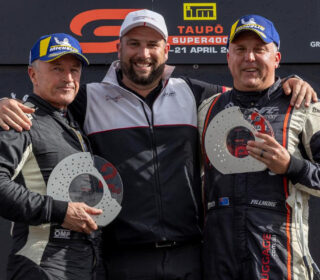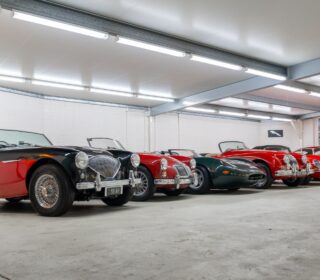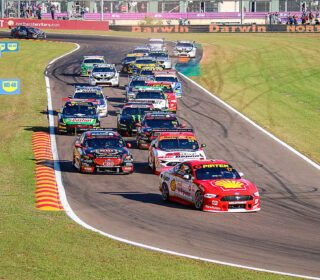HOW COMMUNITY BROADCASTING SHAPED A CAREER
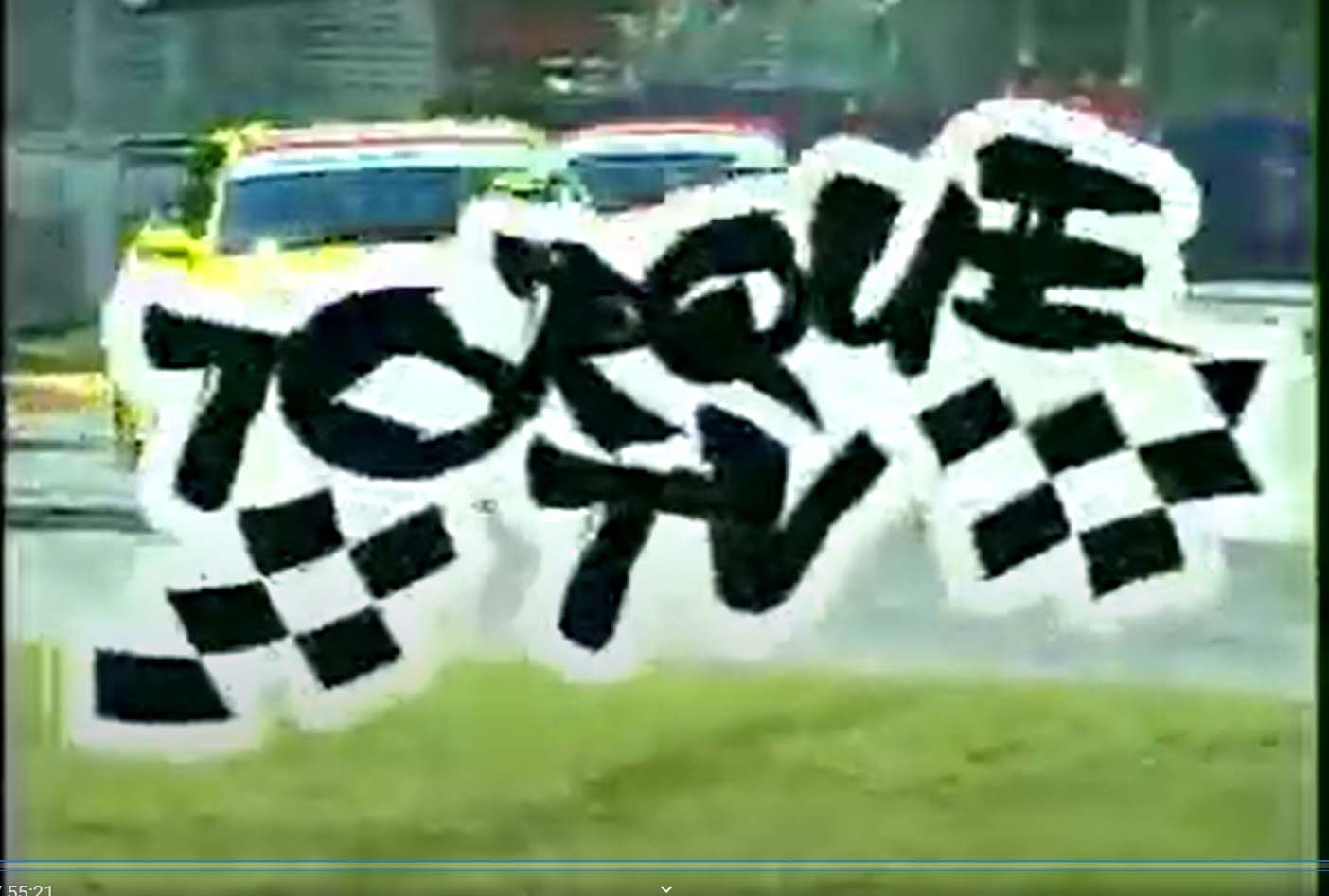
TRT documented on Saturday how important Community TV is to motorsport, let alone the broader media landscape in Australia. Here is another personal take on the influence the medium has had on current motorsport professionals..
WORDS: Richard Craill
THE SERIES of events that led to me being lucky enough to forge a full-time motorsport career began thanks to Community Broadcasting.
Without the opportunity to build skills in a real-world environment, start to build the contact book for the future and basically just go out and have a red-hot go that my early days in local radio and then TV offered, I daresay I’d be stacking shelves at my local Woolies rather than travelling around the world talking and writing about racing cars for a living.
God only knows there’s stuff all else I’m good at!
The Australian Government has a lot going on at the moment, but their decision to push forward with the planned shut down of Channel 31 Melbourne and 44 Adelaide, the last two remaining bastions of Community TV, is a slap in the face for the many thousands of people who got their start in Community broadcasting, including yours truly.
Mark Walker’s excellent look back at his own experience in Queensland got me thinking about my own first steps in the industry.
My start came when I was in High School, when my local radio station reached out to youth in the region to come and give radio a go.
It was love at first sight for me and my stint at Triple B FM in the Barossa (the station lives on today) ended up with me, at times, doing 20 Hours a week on-air and running the production side of things throughout much of what I optimistically called a ‘gap’ year once rid of something as pesky as schooling.
We pumped out a weekly motorsport show – yes, called Race Torque Radio, a product not too dissimilar to our own On the Grid – that saw us broadcast live from the Adelaide 500, cover Rally South Australia when it was still huge and even talk to Peter Brock the week after he won the 2003 Bathurst 24 Hour. They were good times with no commercial pressures and lots of freedom to do what we wanted and really have a go.
Anyway, it was through the radio show that I met a local Karter by the name of Dwayne Blee, who would occasionally come in to promote the regular racing at the Barossa’s excellent kart circuit in nearby Nuriootpa. Dwayno’s dad Steve was the club president at the time.
After finishing one show in late 2003, Dwayne approached me with an interesting offer; along with one of his Uni mates named Dave Butterworth, his major final-year university assignment would be to produce a weekly motorsport TV show for what was then Channel 31 Adelaide and would I be interested in hosting it?
Would I!
It was from there that Torque TV was created and what happened next was basically just a series of excellent events.
By this point I was working full-time in a rubbish sales job at a local Radio Rentals, supposedly selling TVs and Hi-Fi systems (poorly) but mainly spending most of my time producing the radio show and helping out on the TV project.
We launched in 2004 and hit the ground running: Somehow we got permission to film at the Adelaide 500 which would form the basis of our first episode – not a bad way to start. I probably still owe then- Adelaide 500 Media bosses Mike Drewer and Penny Gordon for that!
It was there we found our co-host, too; a lovely lady named Louise was working with Team Lamborghini on their Nation’s Cup campaign. She was from Adelaide, loved the sport and had an interest in the media and what we were doing so it only seemed logical to ask if she wanted to co-host the thing.. to which she said yes on the spot despite having known us for a sum total of five minutes.
You’d never get away with it these days..
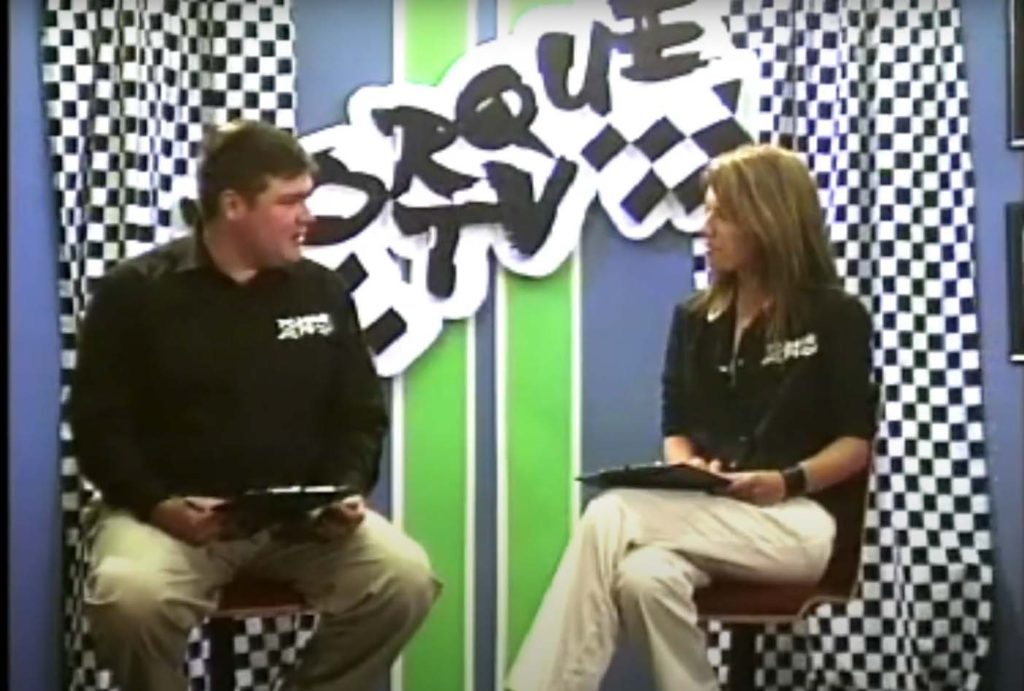
I’m still fiercely proud of what we achieved that year. We’d film on weekends, be it the Adelaide 500, State rounds, motorkahna events or rounds of the South Australian Rally Championship (there’s another yarn in that on it’s own.. cracking season!).
The boys would spend Monday, Tuesday and most of Wednesday madly editing packages together and teeing up guests before we filmed the studio aspects of the show on Wednesday night in the Uni studios.
They would usually be late nights – some of them went well beyond midnight – but we had understanding guests who would stick around, chew the fat and enjoy the process.
The show would then air at 8pm Friday nights on C31 Adelaide, conveniently just after the radio show finished.
The feedback was immense; the local industry loved having their own centerpiece and we were never short of fascinating guests willing to come and talk in the studio, or events to go and cover. There were some memorable times and countless in-jokes that preserve to this day.
By May that year I was getting into strife at work for spending too much time on the internet researching the show and not enough selling rubbish and overpriced rear-projection TVs. Naturally, then, I quit the job and took a punt that I might be able to scrape a meager income out of this whole media thing at some point.
We pumped out more than 30 episodes, one a week, and covered an enormous array of guests, events and personalities around the sport in South Australia. It was fantastic.
One of those guests was a guy by the name of Bronte Rundle.
The owner of Team BRM, a squad most TRT readers will be familiar with, Bronte came on the show during the middle of the year to talk about one of South Australia’s most successful racing teams and their 2004 campaign with a young Karl Reindler at the helm.
The outcome of that chat was that not long after, BR approached me to take over the team’s PR for the second half of the 2004 season: my first ‘real’ motorsport gig. They even paid for me to go to the Gold Coast finale’ that year, held as a support to the IndyCar race: my first ‘real’ motorsport trip interstate and on the job.
Through BRM came work with Formula 3 itself as their series commentator and PR guy and a relationship with the late, great Terry Little – who as well as being Tim Slade’s manager at the time was also conveniently was in the process of starting a new category for 2005, called Australian GT..
Through all of that came a chance in August 2005 to fly to Sydney and call the TV Coverage for both categories on Speedweek for SBS. The rest, as they say, is history and to this point I’ve yet to have a real job since about May 2004.
It all, however, stems back to that year in TV (and the ones in radio prior) spent making contacts, building the requisite skill set and forging relationships was absolutely critical to getting me to the incredibly fortunate position I find myself in today.
All of what I do today has its genesis first in being an avid and passionate fan of the sport – but the skills I developed across five years of Community Radio and TV were key in actually making something happen out of that love of the game.
Sure, everyone can be a content producer these days – if you’ve got a mobile phone and half an idea about which way to point it and what questions to ask when you do, you’ve got basically all the tools you need.
But nothing compares to making ‘real’ radio or TV and the different level of pressure that comes with hitting live marks, spending the time and energy in pre-production or working with real audiences, all the while benefiting from the many relationships that come from it in the process.
They’ve allowed me to bluff my way to a 15-year career doing what I love, and for that, I’m eternally grateful.
Postscript:
You’ll remember I spoke about Dwayne and Dave, who actually produced the show and did all the hard work while I coasted along as Host all those years ago? Well, while Dave works in other fields and now lives in Queensland with his wife, he still loves the sport and we still catch up every year when we head North – last year it was watching the TCR race on the banks of Queensland Raceway.
Dwayne now lives in the UK and works for Formula 1, of all things, as a film editor and producer of their varied content you consume on their website and apps. I’m sure he’d agree that, like me, his grounding in 30-odd episodes of TV produced for a tiny audience in Adelaide each week set him in good stead for working in the cauldron that is F1. I went to his wedding (and a DTM race) in the UK, in 2018.
The Torque TV sign, famous to a very select group of people who either guested on or watched the show back in 2004, lives on to this day in my office: having been removed from Dwayne’s folks’ shed and deemed too expensive or fragile to freight to Queensland or the UK.



